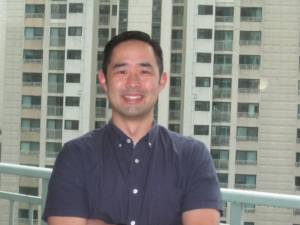
Stories from the Front (of the Classroom)
I will always remember my first time in the front of a class back in 2006. It was a small classroom, seminar style. The magical allure of Advanced Hebrew Grammar brought on an onslaught of seven registered students!
At the time, I had as much formal training in higher education pedagogy as I did in lion taming and skydiving. I am convinced that teaching is still the most precarious of those three.
I wasn’t nervous – but I do remember thinking about the symbolic magnitude of my first time in the front of the class. Like many PhD students, I envisioned a long, fruitful career of teaching. I tried my best to stand tall behind the podium, absolutely certain that advanced Hebrew grammar would radically change their lives forever!
I’m not sure that their understanding of the Hebrew asseverative lo was truly a Gestalt experience for these seven students. But at the very least, the ten-week quarter was memorable. Between Advanced Hebrew Grammar and my twenty students in Hebrew Exegesis: Hosea and Amos, my very first teaching quarter ran the full gamut of positive and negative experiences.
Of course, theological education often challenges students far beyond their mere cognitive abilities. For many of these students, they encounter readings and theology that deeply enrich their faith. Other students may connect religion and spirituality to their understanding of important topics like gender, politics or poverty. Accordingly, the theological classroom can serve as a rich and unparalleled learning opportunity.
At the same time, in those early years of teaching, I learned that the theological enterprise can be painful. I remember the mutiny of students after I returned their first exegetical papers. Or lecturing in front of 200 undergraduate students, flipping to a Powerpoint slide labeled “Middle Bronze Age Highland Trajectories” and not having the faintest idea what “Middle Bronze Age Highland Trajectories” were. Or the first student crisis between the faith of their youth against some of the current readings. During my opening year of teaching, there were lots and lots of tears in the classroom. Some of them were even from the students!
But I survived. I learned a lot from that semester. The institution invited me back, though I decided to never teach more than one class at a time until I finished my dissertation. As of today, I’ve taught forty-four classes, and over seven hundred different students across three different institutions.
As I sift through these memories, I remember that all of these experiences, positive and negative, shaped me as a teacher. I am a very different professor now than compared to 2006. As we approach a new academic year, I invite you to join me and my friends, Eric Barreto of Luther Seminary, and Kate Blanchard of Alma College as we embark on a new academic year. Every week, one of us will find a moment, any moment as a teacher, and present it to the Wabash teaching community. Some weeks, we may make fun of something as seemingly trivial as the early logistics of course prep and the 47,000-word treatise of legal matters that the academic affairs office requires us to attach to each syllabus. Other weeks, we will broach difficult current events, and how we must address those as responsible religious studies educators.
One takeaway from that Spring 2006 remains stronger than ever. The classroom is a powerful place. And for professors, it is from the front of the class that we learn the most.


Hi Dr. Nam, good to have you in Korea!
BJ, It’s great to be here in Seoul. I’m looking forward to a wonderful year!
Now I won’t sleep until I learn about Middle Bronze Age Highland trajectories! But I promise not to inflict them on my Intro students.
Probably.
Brooke, my UCLA colleagues who witnessed the disaster continue to give me a hard time about it every SBL. It’s not like it was only eight years ago!!!